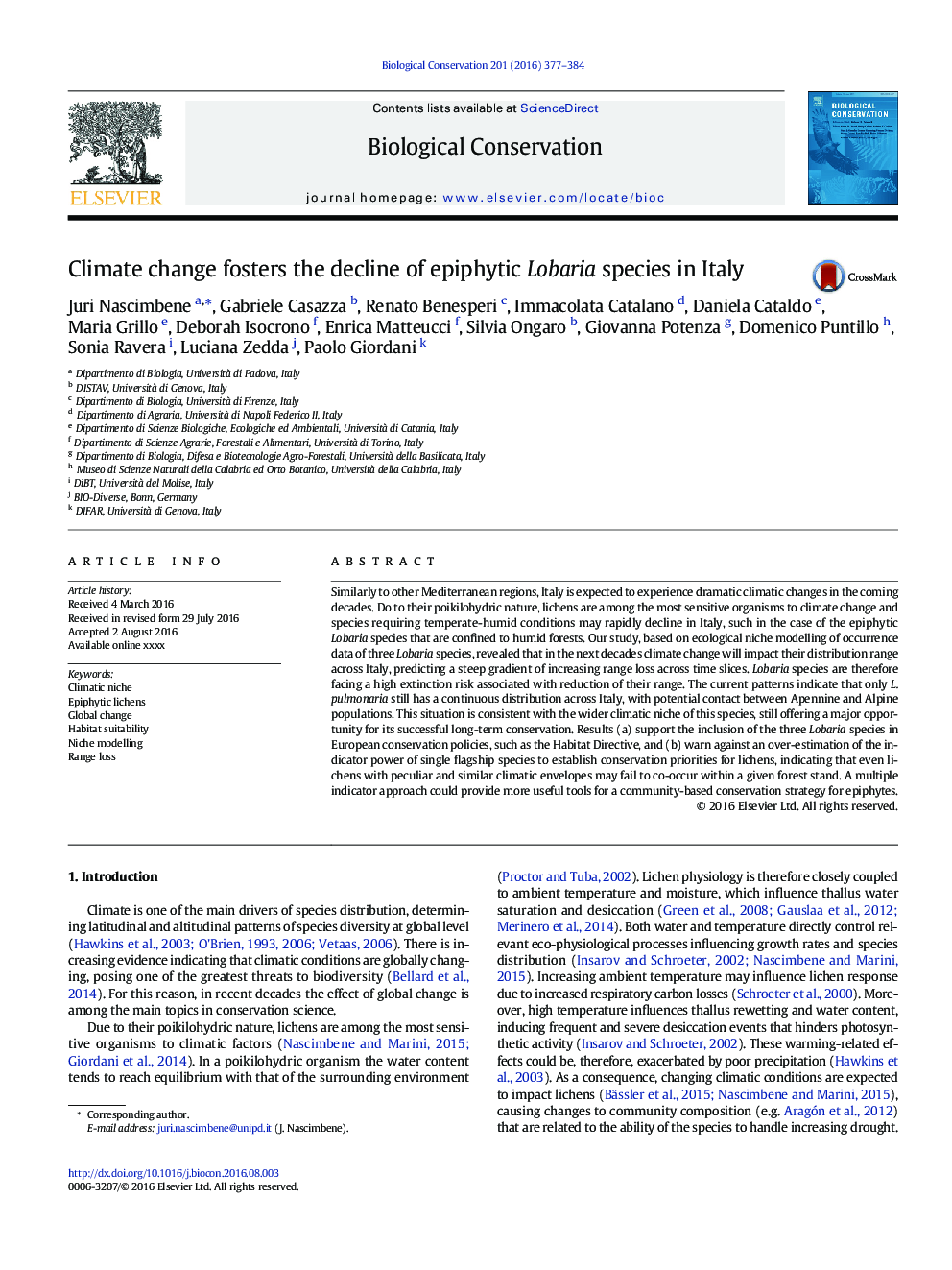| Article ID | Journal | Published Year | Pages | File Type |
|---|---|---|---|---|
| 6298240 | Biological Conservation | 2016 | 8 Pages |
Abstract
Similarly to other Mediterranean regions, Italy is expected to experience dramatic climatic changes in the coming decades. Do to their poikilohydric nature, lichens are among the most sensitive organisms to climate change and species requiring temperate-humid conditions may rapidly decline in Italy, such in the case of the epiphytic Lobaria species that are confined to humid forests. Our study, based on ecological niche modelling of occurrence data of three Lobaria species, revealed that in the next decades climate change will impact their distribution range across Italy, predicting a steep gradient of increasing range loss across time slices. Lobaria species are therefore facing a high extinction risk associated with reduction of their range. The current patterns indicate that only L. pulmonaria still has a continuous distribution across Italy, with potential contact between Apennine and Alpine populations. This situation is consistent with the wider climatic niche of this species, still offering a major opportunity for its successful long-term conservation. Results (a) support the inclusion of the three Lobaria species in European conservation policies, such as the Habitat Directive, and (b) warn against an over-estimation of the indicator power of single flagship species to establish conservation priorities for lichens, indicating that even lichens with peculiar and similar climatic envelopes may fail to co-occur within a given forest stand. A multiple indicator approach could provide more useful tools for a community-based conservation strategy for epiphytes.
Related Topics
Life Sciences
Agricultural and Biological Sciences
Ecology, Evolution, Behavior and Systematics
Authors
Juri Nascimbene, Gabriele Casazza, Renato Benesperi, Immacolata Catalano, Daniela Cataldo, Maria Grillo, Deborah Isocrono, Enrica Matteucci, Silvia Ongaro, Giovanna Potenza, Domenico Puntillo, Sonia Ravera, Luciana Zedda, Paolo Giordani,
